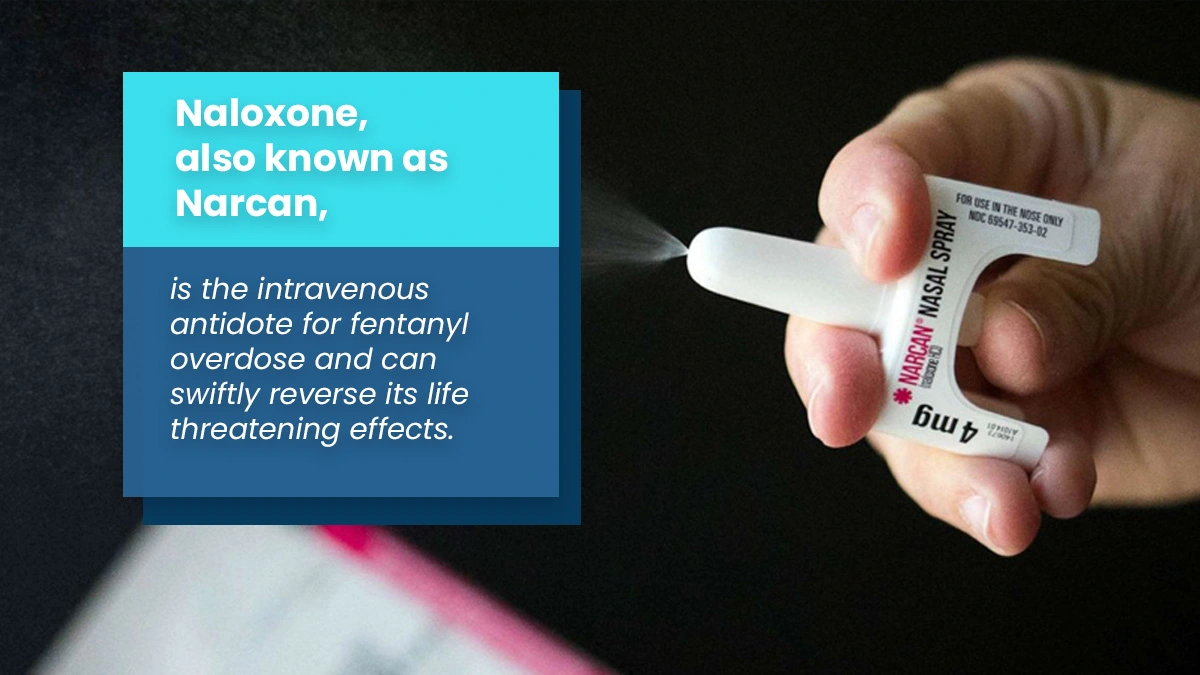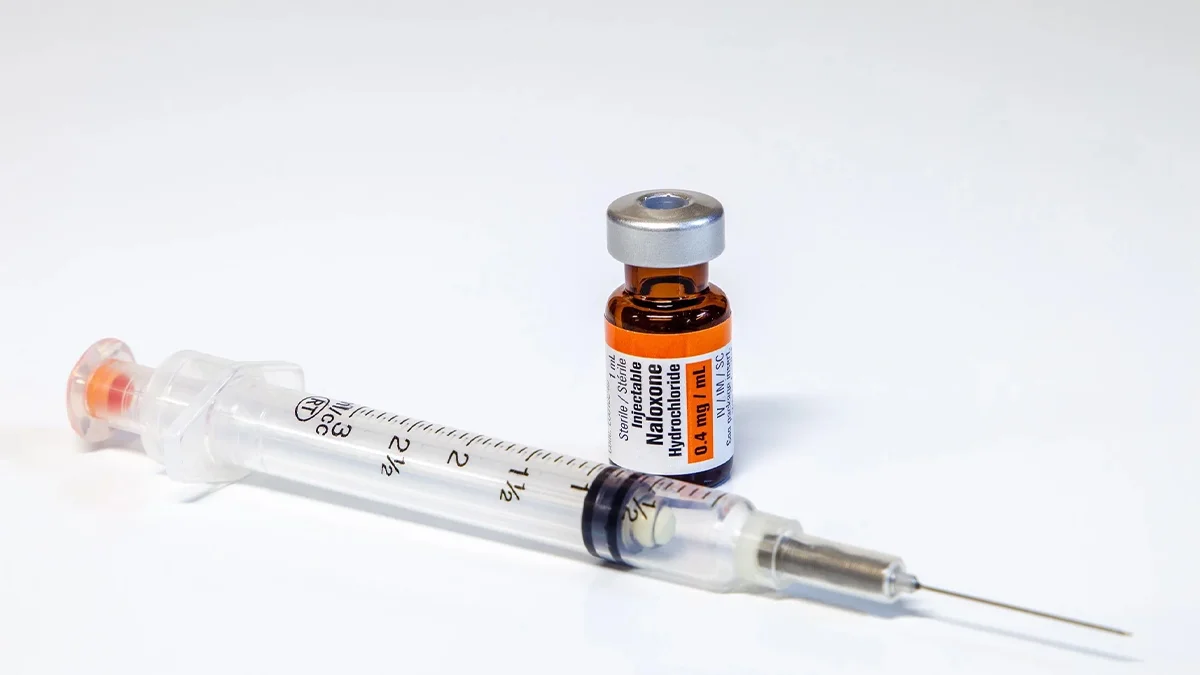Fentanyl, a powerful synthetic opioid, has been making headlines due to its involvement in many overdose cases. Fentanyl, known for its potency, poses a severe risk to users, often leading to overdose and death. Understanding harm reduction strategies can mean the difference between life and death for those struggling with fentanyl addiction.
This blog post will discuss the vital concept of “harm reduction fentanyl.” Harm reduction is an approach to minimize the dangers of drug use. Continue reading to comprehend what harm reduction fentanyl truly means and how it plays an important role in addressing this pressing public health issue.

Key Takeaways
The United States has witnessed a significant rise in overdose deaths involving synthetic opioids like fentanyl, with a 22 percent increase from 2020 to 2021 and nearly 71,000 deaths in 2021. Here’s what you need to know:
- Fentanyl use poses immediate and severe short-term risks, including life-threatening overdoses and long-term consequences.
- Harm reduction strategies include Naloxone overdose response, needle and syringe programs, opioid agonist therapy, overdose prevention sites, and access to treatment.
- Naloxone, also known as Narcan, is the intravenous antidote for fentanyl overdose and can swiftly reverse its life-threatening effects.
- Education is key in harm reduction, creating awareness, empowering individuals, and encouraging support for those struggling with substance use.
At The Haven Detox-New Jersey, we don’t just help you find sobriety; we help you find your haven within. Contact us at (856) 565-3102 today.
The Rise of Fentanyl Use in the United States
The United States has witnessed a troubling surge in opioid-related tragedies recently. Overdose deaths involving drugs like fentanyl have skyrocketed. As per the Centers for Disease Control and Prevention (CDC), the rates of overdose deaths linked to synthetic opioids, including fentanyl, surged by a staggering 22 percent from 2020 to 2021. In 2021, nearly 71,000 drug overdose deaths were connected to synthetic opioids, a rate nearly 22 times higher than in 2013.
The National Institute on Drug Abuse (NIDA) reports an alarming rise in opioid-involved overdose deaths. In 2021, a shocking 80,411 people died from drug overdoses, far above the average. This is a significant increase compared to 2010 when the number was 21,089.
The presence of fentanyl, an ultra-potent opioid, in these overdose cases is a major concern. To combat this crisis, harm reduction programs, including distributing fentanyl test strips and sterile syringes, are crucial in saving lives.
Fentanyl Follies: Understanding the Risks
Fentanyl, a potent opioid, carries many risks for those who use it. These risks include short-term and long-term consequences and social and psychological impacts. Let’s explore these dangers to understand better the perils associated with fentanyl use.
Short-Term Effects
In the short term, fentanyl use can lead to many immediate and severe consequences. People who use fentanyl or its analogs may experience life-threatening opioid overdoses characterized by slowed breathing, loss of consciousness, and, in some cases, death. These effects can happen much faster than heroin or opioids, putting individuals at heightened risk.
Long-Term Effects
The long-term effects of fentanyl use can be equally devastating. Those who continue using fentanyl face the risk of developing substance use disorders, causing them to rely on the drug despite its harmful consequences. This can develop a vicious cycle of addiction, impacting personal relationships, employment, and overall well-being.
Social and Psychological Effects
Fentanyl use can also have profound social and psychological effects. It can negatively affect relationships with family, friends, and the community. The risk of acquiring infectious diseases like HIV and hepatitis C is elevated among those who inject the drug. Individuals using fentanyl may struggle with mental health issues and isolation, exacerbating the overdose crisis.
In addition, understanding these risks is vital to combating the fentanyl epidemic. By implementing evidence-based harm reduction strategies and offering substance use treatment, we can help those affected by fentanyl use and work towards a safer, healthier future, particularly among at-risk young adults.
Fentanyl Harm Reduction Strategies
In the fight against the fentanyl crisis, harm reduction strategies are indispensable. They are a lifeline, offering essential services to individuals at risk. These strategies include Naloxone overdose response, needle and syringe programs, opioid agonist therapy, overdose prevention sites, and access to treatment.
Naloxone Overdose Response
Naloxone, often called “Narcan,” is a medication that can swiftly reverse opioid overdoses. Trained individuals and first responders carry it to save lives in emergencies. If someone shows signs of an overdose, naloxone can be administered, counteracting the effects of the opioids and restoring normal breathing.
Needle and Syringe Programs
Needle and syringe programs provide a safe and hygienic way for individuals to exchange used needles and syringes for clean ones. These programs reduce the risk of HIV, hepatitis C, and other infections that can be spread through shared needles.
Opioid Agonist Therapy
Opioid agonist therapy, like methadone or buprenorphine, helps individuals with opioid addiction manage their cravings and withdrawal symptoms. It’s a crucial part of harm reduction interventions, assisting in reducing reliance on illicit drugs.
Overdose Prevention Sites
Overdose prevention sites offer a haven for individuals to use drugs under supervision. These sites provide a safe environment, access to naloxone, and resources to prevent overdose fatalities.
Access to Treatment
Accessibility to treatment for substance use disorders is fundamental. Individuals struggling with fentanyl or other opioid use issues must have access to recovery services, peer support specialists, and mental health support.
Moreover, these harm reduction strategies are vital in saving lives and decreasing the risk of overdose deaths. By offering a compassionate, evidence-based approach, we can address the fentanyl crisis while supporting those in need.
Importance of Education in Harm Reduction
Education plays a pivotal role in the success of harm reduction efforts. It ensures people understand the risks, prevention methods, and available support. Explore why education is critical in reducing harm and ensuring everyone stays informed and safe.
Promoting Awareness
Firstly, education creates awareness. People need to be informed about the risks associated with substance use, including the dangers of fentanyl and other potent opioids. By spreading knowledge, we can help individuals make informed choices and reduce the chances of harm.
Empowering Individuals
Education empowers individuals to protect themselves and others. It provides information on harm reduction services, such as needle exchange programs, overdose prevention education, and fentanyl testing strips. People can access and mitigate risks when they know about these services.
Reducing Stigma
Education also helps to reduce the stigma surrounding substance use and addiction. Understanding that addiction is a complex health issue rather than a moral failing encourages people to seek help without fear of judgment.
Preventing Overdoses
Education about the signs of an overdose and the appropriate response, like using naloxone, is life-saving. It equips individuals to act swiftly when they encounter someone in danger.
Encouraging Support
Education fosters a culture of support. It encourages those struggling with substance use to seek treatment programs, peer support, and medical care.
Furthermore, education is the cornerstone of harm reduction, helping individuals make informed decisions, access critical services, and save lives. By spreading knowledge, we empower people to take charge of their health and well-being, reducing the risks associated with fentanyl and other substances.
Frequently Asked Questions (FAQ)
Is there a grant for fentanyl test strips?
Fentanyl test strip grants exist through various organizations and government agencies to support harm reduction efforts and combat the opioid crisis by providing access to these life-saving tools.
What is the half-life of illicit fentanyl?
The half-life of illicit fentanyl varies, but it’s generally short, often around 3 to 5 hours, depending on factors such as the specific type and dosage used.
What is the IV antidote for fentanyl?
The intravenous (IV) antidote for fentanyl overdose is naloxone, commonly known as Narcan. It effectively reverses the life-threatening effects of fentanyl and other opioids, restoring normal breathing.
Rebuild Your Life with The Haven Detox-New Jersey’s Support
In the battle against fentanyl addiction, education and harm reduction are important, but the first step toward recovery is seeking professional help. The Haven Detox-New Jersey offers a lifeline to individuals struggling with substance abuse.
Our comprehensive services include detox, residential programs, and specialized treatments for alcoholism, suboxone, benzodiazepines, and cocaine addiction. With a dedicated team of experts and a supportive community, we provide the care and guidance needed to embark on a journey to sobriety.
Take the first step toward recovery. Your path to a healthier future starts here. Contact us at (856) 565-3102 today.

 (856) 565-3102
(856) 565-3102




 9 January 2024
9 January 2024 

